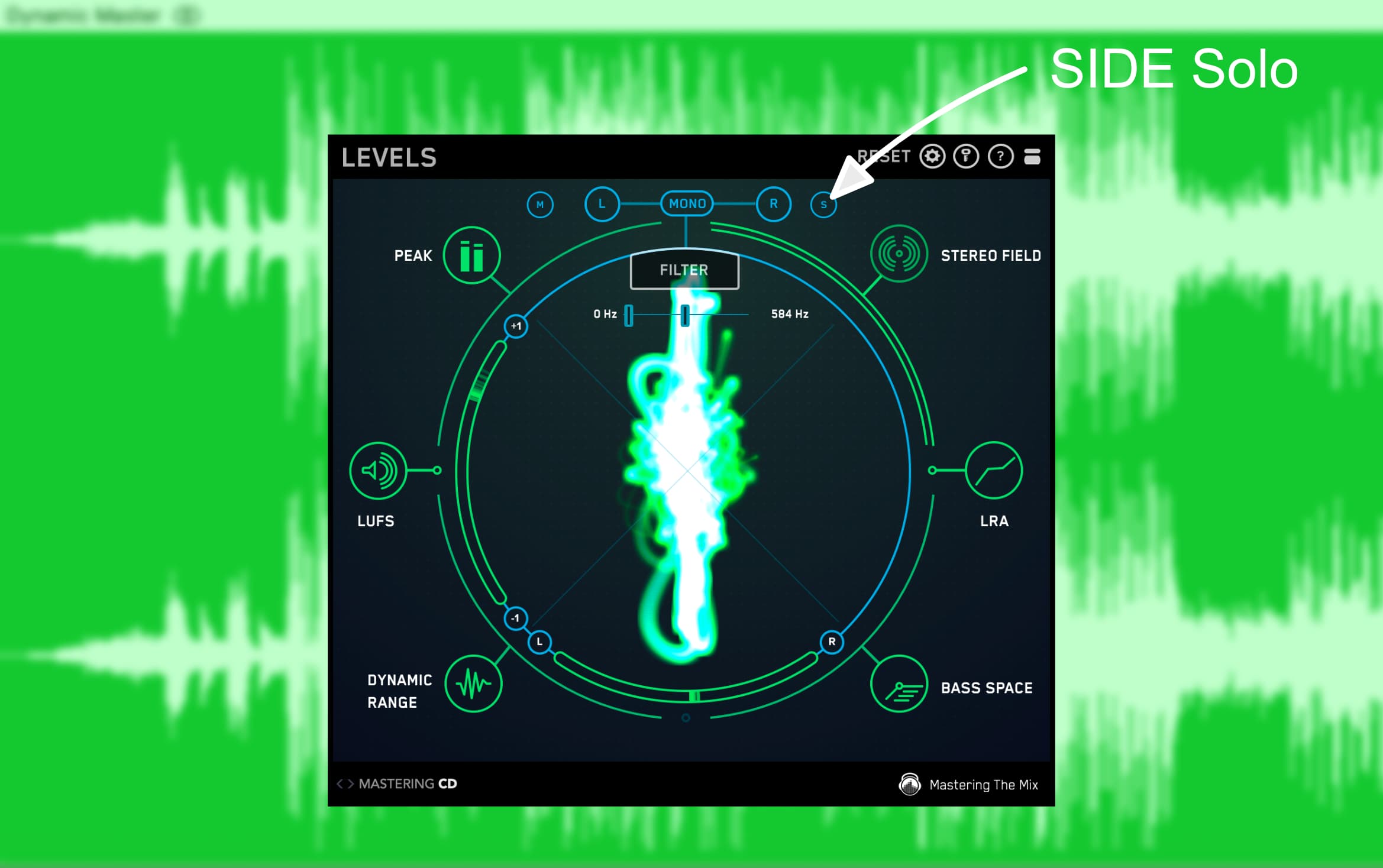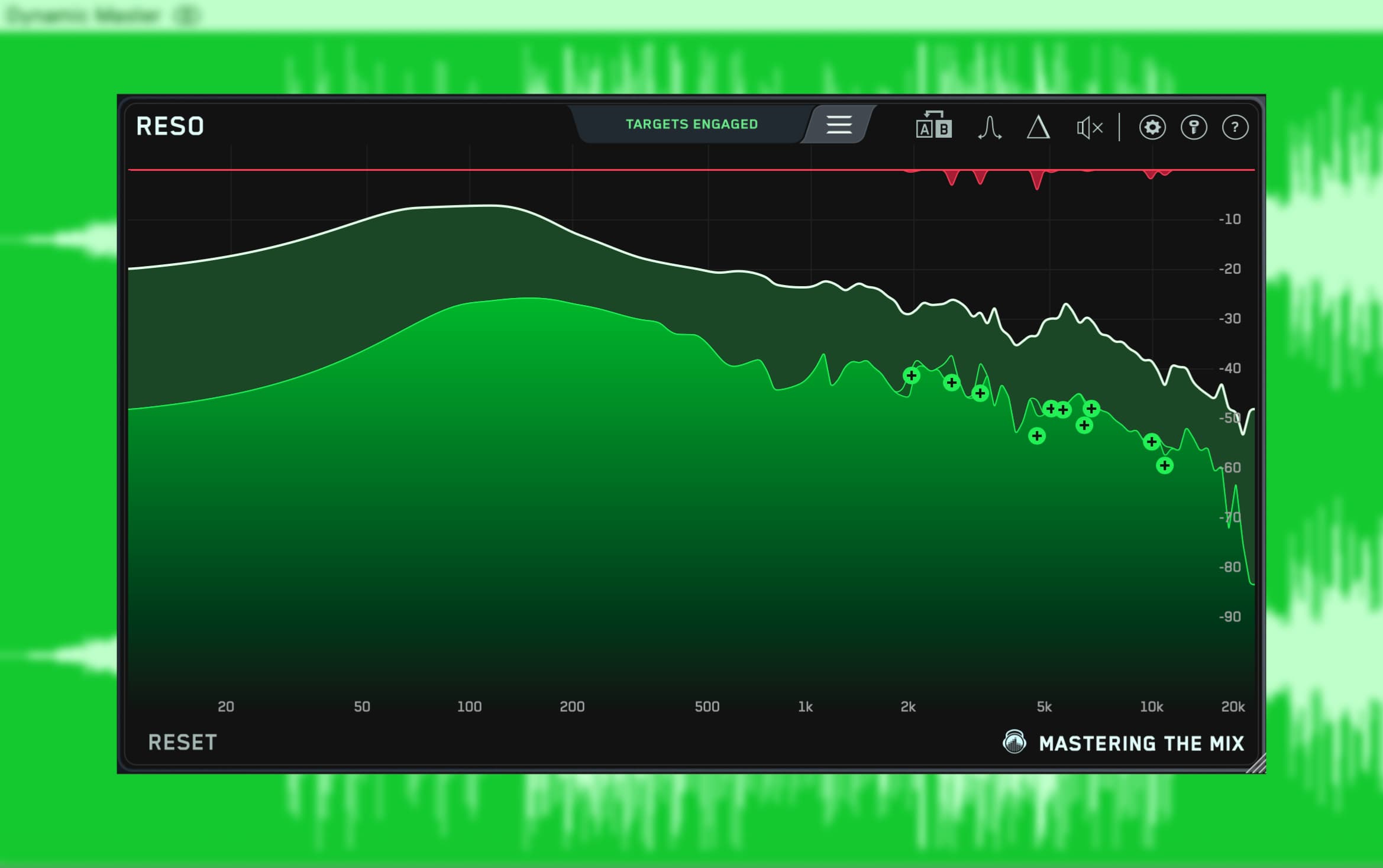What happens when you can’t ‘fix it in the mix’? Give up…? Or try some ninja skills to solve nasty problems in the master itself? You’ve got to roll out those ninja skills.
In this blog post I'm going to explain some incredible approaches that can dramatically improve your master in situations where you thought all hope was lost.
The beauty of these techniques is that you might find yourself employing them with great success even when you could address the issues in the mix. Either way, these ideas will 100% level up your knowledge and authority when you come to master music, and hopefully get you out of some sticky situations.

Difficult Individual Instruments
The main reason why fixing things in the master is tricky is that the processes you implement will affect all the channels in the range you’re adjusting. So, if you want to add an EQ boost to the snare in the 5kHz range, you’re also going to hear the boost in the vocal. If the vocal was already sounding good, it’s now going to sound too bright.
Mid, side, left or right focused EQ adjustments are the key to solving difficult individual instruments.

You need to first identify where in the stereo field the issue is. For this example, let’s say we want to add more body to a weak sounding vocal.
Step 1: Create a ‘mid’ EQ band.
Step 2: Solo the band and adjust the Q and frequency to identify where the low-end of the vocal is.
Step 3: Boost the EQ whilst listening to the whole mix. Compare and match the body of the vocal to a reference track using our plugin REFERENCE for extra marks.

You can use this technique to boost or attenuate specific instruments too. The amount you can adjust by depends on the relative balance of instruments occupying the same range. For example, you could boost the mid channel in the 500Hz-3kHz to increase the vocal as long as the snare and synths in that range aren’t too overpowering. I’ve found that I can usually fairly transparently adjust the vocal level in a master by around ±3dB before it starts sounding weird.
Hi-hats levels are a common issue, and can sometimes be very easily resolved. There are three reasons for this. Firstly, there are rarely any competing instruments in the hi-hat range. Secondly, the hi-hats are usually punchy and short, meaning you can dynamically control them without affecting the tonality or tail of any sounds in that range. And finally, they are often panned either in the mid or side channels.
Put all of these attributes together and you’ll find that you can use a multiband compressor to isolate the problem and fix it very transparently. Below are two different scenarios with equally effective solutions.
Scenario 1: Hi-hats are too loud. Hi hat’s are wide in the mix. The solution is to apply multi-band compression to focus on the hi-hats, in the side channel with the compressor going back to ‘zero’ quickly after the reduction.

Scenario 2: Hi-hats are too quiet. Hi hat’s are centered in the mix. The solution is to apply upward expansion to lift the hi-hats out of the mix in the mid channel.

Muddy Or Excessive Reverb
When you’re mastering, try soloing the sides to see what's happening there. You can do that by clicking the ‘side’ button in LEVELS. Then head to the stereo field section and use the filter. Taking 10 seconds to do this will give you a really good understanding (both audibly and visually) of the mix you’re working with.

If you listen to the master and you get a sense that the reverb is overwhelming the mix, you’ll want to confirm the reverb's stereo position. The reverb might be in mono, in which case, sadly, there’s not much you can do. When you solo the sides like the example above, if you hear a lot of reverb relative to the other details in the side channel, then you’ll be able to reduce it.
Step 1: Create a side EQ band.
Step 2: Solo the band and adjust the Q and frequency to identify where the focus of the overwhelming reverb is.
Step 3: Reduce the EQ band whilst listening to the whole mix. Compare and match the reverb level to a reference track for extra marks.

Resonances
Resonances plague your audio with unpleasant and irritating whistle-like noises. Removing them dynamically is the only way to do it transparently.
Resonances come and go in the mix. If you use a static EQ and cut the resonances then you’ll leave ‘non-resonant’ sections sounding hollow and weird.
Our plugin RESO automatically identifies the most resonant frequencies, then suggests an appropriate amount of dynamic reduction to solve the problem without making your mix sound weak or thin.

Transients
Part 1: Too Much Punch.
Transients poking through the mix too much? It can happen! It’s often a symptom of when someone is monitoring their music too quietly when they’re mixing (they boost the punch to compensate).
Using a generic compressor to clamp down on these transients is a quick way to get your mix pumping up and down in volume in an unnatural way; though this might work if you just want to take the edge of your transients by 1dB or so.
I have two suggested approaches here.
Firstly, you could isolate the issue using a Multi-band compressor (like we did for the weak hi-hats earlier in the blog).
Alternatively you could use a specific transient tool, like Spiff or Split EQ to bring down the transients of your master. These tools are expensive but pay for themselves once they’ve saved you once or twice.

Part 2: Not Enough Punch.
Introducing more punch into your mix is a little easier than controlling them.
A simple solution is to use the PCH (punch) slider in our plugin LIMITER. It analyzes the transients in your mix and uses a musical and tasteful algorithm to enhance them in your mix.

For a more focused approach, you can use our plugin ANIMATE to focus the punch on a specific frequency range in the mix, whilst setting the mid-side adjustments as well as other transient related parameters.

Excessive Noise/hiss
Noise and hiss can be cool. It can add a lovely character and grit that gives the music charm and sets the tone.
But when it’s too much, it’s just annoying. Thankfully, it’s an easy fix, IF you have a snippet of the hiss isolated. This is either going to be at the beginning or end of the audio file when all other instruments have faded out. If you hear it, you’re good to go.
Step 1: Load a noise reduction plugin on your master channel.
Step 2: Monitor the isolated hiss and click ‘learn’ on your plugin.
Step 3: Adjust the reduction to taste.
You rarely need to completely remove it. Often just a slight reduction can really help.

Channel Conflict
This expert approach will surely knock your clients off their chair…
If you have conflicting channels (kick and bass, or vocal and music), you might be able to solve the problem using AI stem separation (I use this one which is the best I've tried so far).
Once you have the drums, bass, vocals and other elements separated in your session, you can process them individually.
Note that these stems will sound exactly the same when you combine them together as the mix that you uploaded for stem separation. So even if the channels sound a bit weird individually, any processing you do should still sound natural when you combine them all together.
This opens up a world of possibilities outside the scope of this blog post, but I wanted to include it so it can be a solution to an otherwise impossible problem that you might face.

Things You Simply Can’t Fix:
Overcompression + Distortion:
These are irreversible and burnt into your track. You might need to embrace the sound and make it part of the character of the song. You wouldn't be the first.
Bad Recordings:
Clipped audio is a common one. I sometimes see a vocal take during the chorus where the vocals just push past the limit and distort. It’s such a shame as it really does stick out like a sore thumb in the context of a mix.
Making a feature of it is a realistic solution. This means distorting the hell out of a phrase where the distortion is overloading so it’s hidden behind the effect. I digress, this is a mix fix rather than a mastering fix.
Whilst I’m digressing, another issue can be the vocalists being too far from the mic. This just makes the vocals sound distant. One way to make this seem purposeful is to drench it reverb so the vocal is more atmospheric.
Tuning and Timing:
There could be a possibility of fixing tuning and timing issues using the AI stemming approach. Without it, there’s not much chance of resolving tuning and timing issues during mastering.
More Than 3dB Balance Issue Of Individual Instruments:
The mid-side adjustments I’ve suggested earlier in the blog have their limits. There comes a point where the adjustments are just too much and no longer transparent. There might be occasions when pushing past ±3dB works. I’ve mastered tracks for clients where I’ve needed to push the low-end up by around 10dB, and it works!
It’s only possible if the kick and bass have a good balance relative to each other, but together are quiet or loud in the context of the whole mix. If the kick was a good volume but the bass was too quiet, then pushing up the low-end would result in the kick being boosted too heavily.
File Type Issues:
It’s always best to have the HQ wav or Aiff files. There’s no reversing the information lost from a lossy file type, such as MP3, AAC, Ogg Vorbis etc.

Conclusion
I’ve mastered thousands of songs for my clients, and I feel like I’ve seen it all. I’ve faced such a huge variation of different issues and I’ve always found it a fun challenge to try and fix them.
It’s kind of like a gym workout for your mastering skills. The greater your ability to identify and resolve tricky problems, the easier it is when it comes to the more straightforward stuff.
If you find yourself in a bind in the future search for ‘Difficult Mastering Problems And How To Solve Them’ in google and this blog post will show up.







